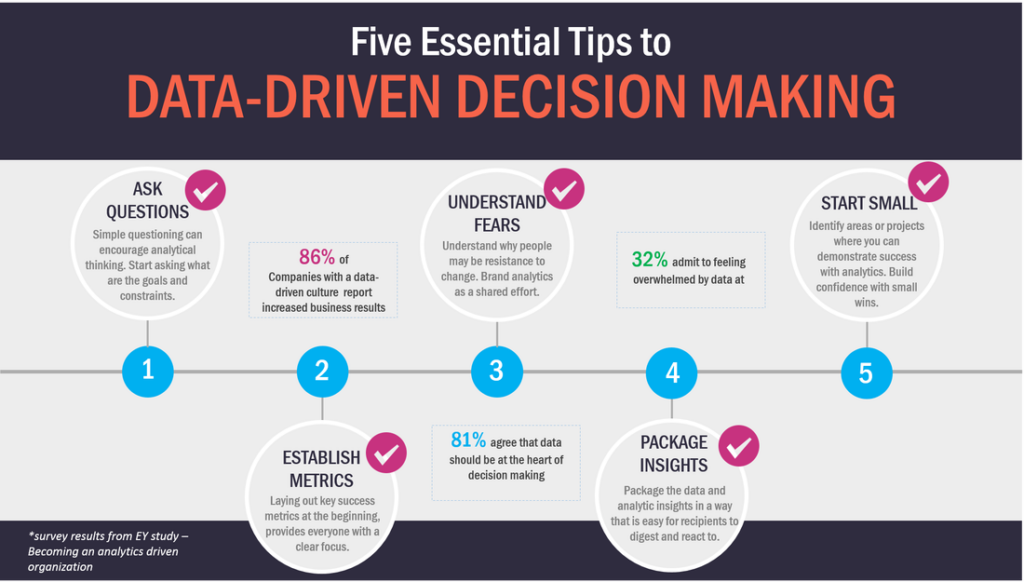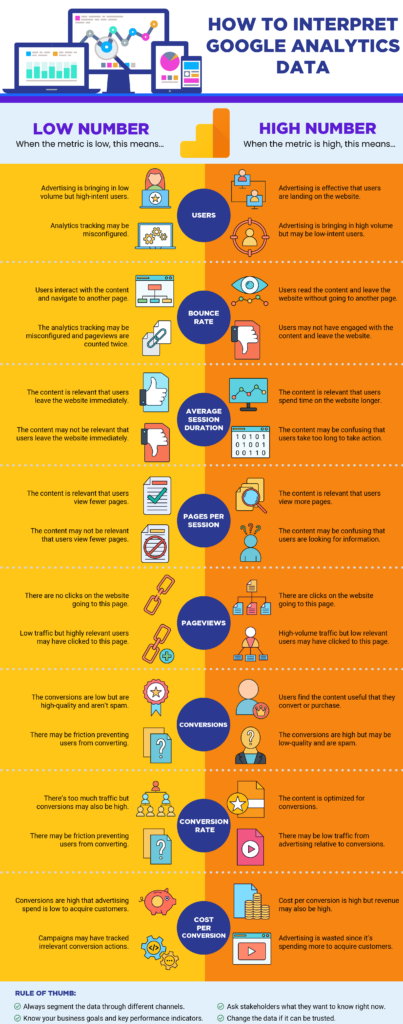Why is Analytics for e-Commerce so Important

Ecommerce analytics is the process of collecting and analyzing data from your online store to understand how customers are interacting with your website and make informed decisions about your marketing and product strategy.
Here are some of the most important reasons why e-commerce analytics is so important:
- To understand your customers: E-commerce analytics can help you understand who your customers are, what they’re interested in, and how they’re finding your website. This information can help you to tailor your marketing messages and product offerings to your target audience.
- To optimize your website: E-commerce analytics can help you identify areas of your website that are performing well and areas that need improvement. This information can help you make website changes that will improve the user experience and increase conversions.
- To measure the effectiveness of your marketing campaigns: E-commerce analytics can help you track the performance of your marketing campaigns and see which channels are driving the most traffic and sales. This information can help you to allocate your marketing budget more effectively.
- To make better business decisions: E-commerce analytics can provide valuable insights to help you make better business decisions. For example, you can use e-commerce analytics to identify new product opportunities, improve your pricing strategy, or optimize customer service.
Analytics is essential for any online retailer that wants to succeed. By collecting and analyzing data from your website, you can better understand your customers, optimize your website, and make better business decisions.
How Analytics Help you with Decision-Making
Imagine you are a detective solving a mystery. You have many clues and pieces of evidence, but you need to figure out how they all fit together to solve the case. That’s where analytics comes in.
Analytics is like being a super detective with special tools and gadgets. It helps you gather all the information you have and organize it in a way that makes sense. It helps you see patterns, find connections, and uncover hidden insights.
In the world of decision-making, analytics works in a similar way. Instead of clues and evidence, you have lots of data about your business, like how many people visit your website, what they buy, and how much money you make. Analytics tools help you collect and analyze this data to make sense of it all.
Just like a detective uses their tools to find the best leads and make informed decisions, analytics helps you do the same for your business. It shows you important information about your customers, like what they like, what they don’t like, and what makes them buy your products. It also helps you understand how your marketing campaigns are doing and if they are reaching the right people.
By using analytics, you can make smarter decisions for your business. For example, if you see that a certain product is very popular, you can order more of it to meet the demand. If you notice that a particular marketing strategy is not working well, you can change your approach and try something different.
So, think of analytics as your super detective partner. It helps you gather all the information, see the big picture, and make the best decisions for your business, just like a detective solves mysteries and catches the bad guys!

How Analytics Help you to Understand Customer Behavior
Imagine you have a bakery that sells delicious cookies. You want to know which cookies are the favorites among your customers and why. Analytics can help you with that!
Analytics is like having a special taste-testing machine in your bakery. It helps you gather information about the cookies people buy, which ones they like the most, and why they choose certain flavors.
With analytics, you can collect and analyze data about your customers’ preferences. You can see which cookies sell the most, which ones are left on the shelves, and even ask your customers for feedback on their favorite flavors.
By looking at this data, you might discover interesting things. For example, you might find out that chocolate chip cookies are a big hit, especially among kids, because they love the gooey chocolate inside. Or you might learn that oatmeal raisin cookies are popular with adults who enjoy the chewy texture and hint of sweetness.
Understanding customer behavior through analytics helps you make decisions to make your bakery even better. If you notice that customers love a specific cookie, you can make sure to always have it available and maybe even create variations like mini versions or different shapes.
Analytics also helps you identify trends. For instance, you might notice that during certain seasons, customers prefer cookies with flavors like pumpkin spice or gingerbread. This information allows you to plan ahead and have those cookies ready when customers are most likely to buy them.
So, analytics is like your special taste-testing machine that helps you understand what cookies people like, why they like them, and when they like them the most. It’s like having a secret recipe to make your bakery a favorite destination for cookie lovers!
How Can I use Analytics to Improve my Marketing Strategies
You can use analytics to supercharge your marketing strategies and achieve better results.
- Set objectives: First, set marketing goals. Increase website traffic, leads, and sales. Clear goals will help you prioritize your analytics metrics.
- Track and assess your marketing initiatives using analytics tools, monitoring website traffic, conversion rates, email open rates, social media participation, etc. Google Analytics, social media analytics, and email marketing systems give useful data.
- Find patterns and trends: Analyze your data. Find the best marketing channels, peak engagement periods, audience demographics, and content that resonates with your target market. This helps you identify strengths and weaknesses.
- Optimize your campaigns based on your insights. If your social media audience prefers visual material, publish more of it. Optimize content and SEO for terms that bring in the greatest traffic. Use data to tweak your marketing strategy.
- Personalize your messaging: Analytics indicate consumer preferences and habits. Personalize your marketing using this insight. Content, offers, and ads should reflect your target audience’s interests. Personalization boosts engagement and conversions.
- A/B testing: Analytics lets you test various marketing pieces to determine which works best. Test email subject lines, ad text, and landing page designs. Analyzing the findings helps you choose and apply the best methods.
- Analytics improves continuously. Monitor and evaluate marketing data to find new possibilities and challenges. Keep up with industry developments by trying new tools and methods. Data-driven thinking lets you improve marketing efforts and remain ahead of the competition.
- Analytics is a marketing superpower. It aids in audience analysis, decision-making, and marketing effectiveness. Use analytics to improve your marketing strategy, attain your objectives, and succeed.
You Can Also Need Analytics for:
-
Optimizing website performance: Analytics provides valuable data on website performance, including page load times, bounce rates, and conversion funnels. By analyzing this data, businesses can identify areas where their website may be underperforming and take steps to optimize the user experience. Improving website performance can lead to higher conversion rates, increased customer satisfaction, and better search engine rankings.
-
Inventory management and forecasting: E-commerce analytics helps businesses track and manage their inventory effectively. By analyzing historical sales data, businesses can identify popular products, forecast demand, and ensure optimal stock levels. This helps reduce inventory costs, prevent stockouts, and improve overall operational efficiency.
-
Monitoring customer satisfaction: Analytics can provide insights into customer satisfaction levels by analyzing customer feedback, reviews, and ratings. By monitoring these metrics, businesses can identify areas where they may be falling short and take corrective measures to improve customer satisfaction. Satisfied customers are more likely to become repeat customers and brand advocates, leading to increased loyalty and positive word-of-mouth.
What are the Essential Principles of Analytics you Should Understand?
-
Data Collection: Gather accurate and comprehensive data from various sources.
-
Data Quality: Ensure data is accurate, complete, and reliable.
-
Contextual Understanding: Consider the broader context when interpreting data.
-
Data Visualization: Use charts and graphs to visualize data for better comprehension.
-
Statistical Analysis: Apply statistical techniques to uncover insights and patterns.
-
Experimentation and Testing: Conduct tests to compare strategies and optimize performance.
-
Predictive Analytics: Use historical data to make predictions about the future.
-
Ethical Considerations: Respect privacy, comply with regulations, and use data responsibly.
-
Continuous Learning and Adaptation: Stay updated with new tools and techniques.
-
Actionable Insights: Derive insights that drive informed decisions and action.
Understanding these principles helps leverage data effectively for insights, decision-making, and achieving business goals.
Conclusion
Analytics for e-commerce is incredibly important. It provides valuable insights into customer behavior, helps optimize marketing strategies, improves decision-making, and enhances overall business performance. By leveraging analytics, e-commerce businesses can understand their customers better, personalize experiences, and make data-driven decisions to drive success in the competitive online marketplace.




